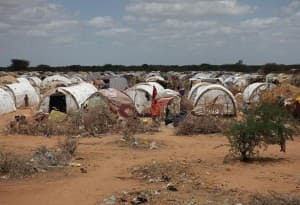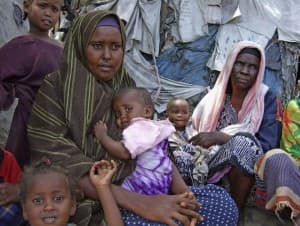
Somalia, the “failed state” on Africa’s East coast, appears to be forever marred by disrepair. Without an effective central government since President Siad Barre was overthrown in 1991, it has been dominated by seemingly irresolvable clan warfare. This domestic crisis has only served to exacerbate issues of famine and disease which have plagued Somalia and resulted in the deaths of up to one million Somalis.
More recently, Somalia and the international community have been faced with further preoccupations, including the presence of an Islamist insurgency which has consolidated its power in Southern Somalia. The notorious Somali piracy operation has also proved a massive headache for the international shipping arena, prompting NATO action.
Kenya, on the other hand, provides a stark contrast to its lawless neighbour. In comparison to the rest of the East African region, it is deemed to possess a well-established and prosperous economic, political and social infrastructure and justly deserves its title as East Africa’s “economic hub”.
It is therefore unsurprising that an estimated 623,000 refugees have fled to Kenya, which is also home to Dadaab, the largest refugee camp in the world, 100 kilometres from the Kenya-Somalia border and home to the vast majority (470,000) of Somali refugees in the country.
Dadaab has recently made headlines as Kenyatta University, whose main campus is based in the Kenyan capital of Nairobi, has opened a second campus there, making it the first refugee site in the world to offer tertiary education. This is especially welcome news for the Somali refugees in Dadaab who have so far lacked the opportunity to pursue education further.
Some vocational training is available but many refugees want education on their doorstep, largely to overcome concerns that lack of education and employment opportunities increases the potential for disenfranchised youths to be recruited into militia and banditry. In July, eight aid agencies reported that around 164,000 children – more than 70% of those in Dadaab – were not in school. Children who did go to school were attending classes containing more than 100 pupils.
The campus in Dadaab promotes the aim to first and foremost improve education opportunities for refugees. The University has already allocated two-thirds of its places to refugees, with the rest set aside for locals. Self-sponsored students and those backed by donors are due to start next January, while students admitted under The Borderless Higher Education for Refugees Project will join early next year and have tuition fees waived.
The Kenyan government has repeatedly called for international NGOs to repatriate Somalis to safe areas in their homeland. These calls have increased in recent months, as African Union peacekeepers and Kenyan troops have begun to successfully counter Islamist insurgents al-Shabaab. The peacekeepers drove al-Shabaab out of the capital, Mogadishu, last year and have already seized several towns in the South.
It is this recent pacification of key areas in Somalia, and the Kenyan government’s assertion that the overcrowded camps at Dadaab pose “serious security threats to Kenya and the region” that forms the basis of the argument for why Somali refugees should return home.
The NGOs, who join Somalis in welcoming the Kenyatta University Campus in Dadaab, have refuted the Kenyan government’s calls to repatriate Somali refugees, warning that it is too early to talk about sending them home given the conflict. Last month, Médecins sans Frontières (MSF) said: “While Somalia remains embroiled in armed conflict, calls for the repatriation of refugees are grossly premature. Security conditions on the ground do not allow for adequate protection or the secure delivery of humanitarian aid.”
Whether Somali refugees in Kenya should be repatriated is a burgeoning discussion but what it is certain is that the latest educational opportunity provided for the Dadaab refugees is invaluable not only in terms of how their qualifications will be able to contribute to Kenyan society but also in terms of what they can give to rebuilding their own country when the time comes. For Somalis, access to tertiary-level education will prove to be a powerful weapon and crucial to the long-term development of a shattered population.
Rebecca Meeson-Frizelle


No comments:
Post a Comment